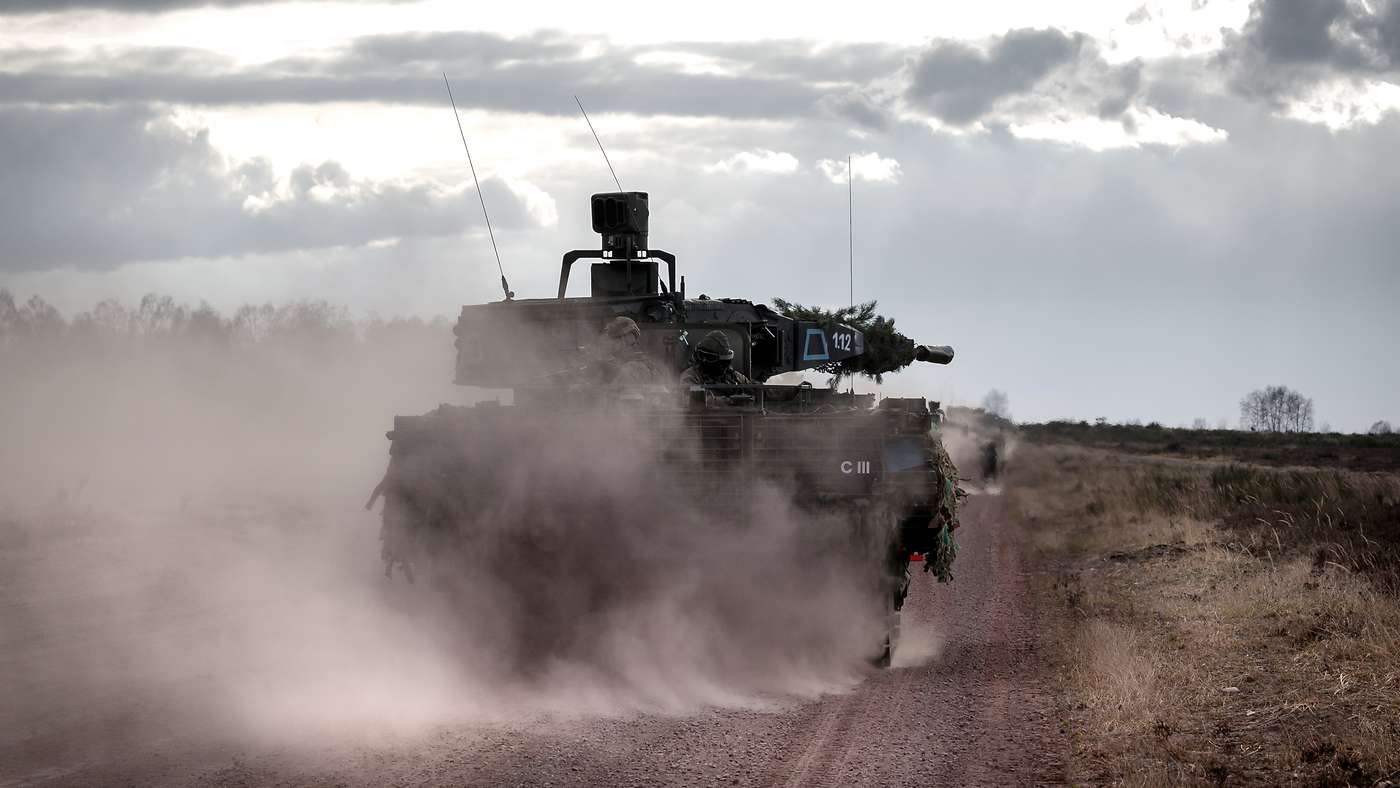The 2nd company of the 33rd Panzergrenadier Battalion recently underwent rigorous training at the target practice center for tank troops in Munster. The servicewomen and men not only honed their skills during the demanding two-week period but also witnessed the exceptional performance of the Puma infantry fighting vehicle, which proved itself as a formidable asset and an indispensable support for the army’s heavy forces. A Reinforced Panzergrenadier Company is a vital component of the Heavy Forces, characterized by the allocation of additional combat vehicles and enhanced skills to the company commanders in addition to their own armored personnel carriers or main battle tanks. This reinforcement grants them greater flexibility in handling various situations. However, coordinating these augmented forces requires increased effort. Leading the 2nd company of Panzergrenadier Battalion 33 from Neustadt am Rübenberge, Major Stephan O. commanded a total of 18 Puma infantry fighting vehicles, five Leopard 2 A6 main battle tanks, as well as signalmen and engineers during the exercise. These assets were sourced from their own battalion, other formations of Panzerlehrbrigade 9, and Panzerbrigade 21.
Intensive training for the entire company focused on the principle of starting with easy tasks and progressively tackling more challenging ones. The initial days were dedicated to training in sub-units to prepare for the subsequent company exercise. The objective was to continually elevate the soldiers’ level of training. The training encompassed both mounted and dismounted combat scenarios. This involved the crews and rifle squads operating either within the Puma or engaging in battles outside the tank. The final two-day exercise focused on delay tactics, a culmination of warfare skills. The aim was to impede the enemy’s advance, buy time, and wear down the opponent. The company’s own forces fought with great agility, defended for a limited period, and switched to predefined lines upon receiving orders. The success of this complex operation depended on seamless coordination among all units, and the Panzergrenadiers from Neustadt demonstrated their expertise in this regard. In addition to the crews, the repair and supply teams played a crucial role in the success of the training operation. With each exercise and training day, the crews gained confidence in operating their weapon systems.

The conclusion of the two-week exercise emphasized the power and assertiveness of the Puma infantry fighting vehicle, underscoring its indispensability within the heavy forces of the army. Its impressive speed and formidable armament make it highly effective in long-distance combat scenarios. Equipped with main battle tanks and armored personnel carriers, the armored troops possess the necessary tools for a wide range of operations and activities. The advanced equipment and communication systems facilitate seamless interaction between the crew and rifle squads, as well as between military leaders and their superiors. The Panzergrenadiers are well-positioned to tackle their present and future assignments. The significant contributions of large, heavy formations such as Panzer Lehrbrigade 9 “Niedersachsen,” to which Panzergrenadier Battalion 33 belongs, are instrumental in expanding the army’s capabilities.
The Puma is a German infantry fighting vehicle (IFV) (Schützenpanzer or short SPz) designed to replace the aging Marder IFVs currently in service with the German Army. Production of the first batch of 350 vehicles began in 2010 and was completed in August 2021. A second batch of 229 Pumas received funding. Mass production began on 6 July 2009. The companies responsible for this project are Krauss-Maffei Wegmann and Rheinmetall Landsysteme, which created a joint venture, Projekt System Management GmbH (PSM). The Puma is one of the world’s best-protected IFVs, while still having a high power-to-weight ratio. The primary armament is a Rheinmetall 30 mm MK 30-2/ABM (Air Burst Munitions) autocannon, which has a rate of fire of 200 rounds per minute and an effective range of 3,000 m. Keeping the weight within the 35-ton limit also led to a smaller calibre for the secondary armament, a coaxially mounted 5.56 mm HK MG4 machine gun firing at 850 rounds per minute and with an effective range of 1,000 m. To combat main battle tanks, helicopters, and infrastructure targets such as bunkers, the German Puma vehicles will be equipped with a turret-mounted EuroSpike Spike LR missile launcher, which carries two missiles.















